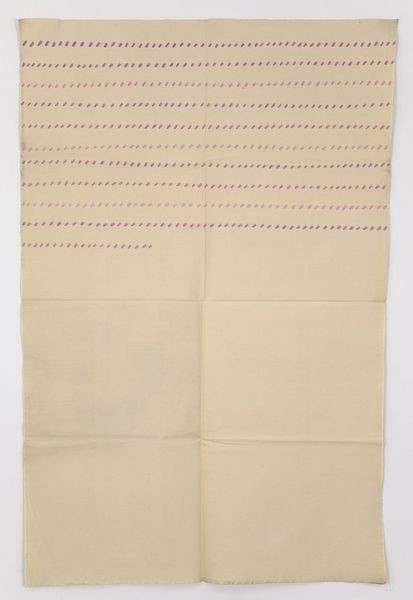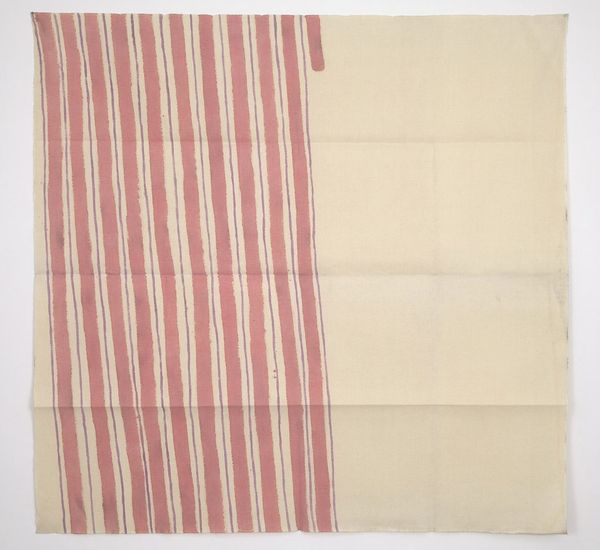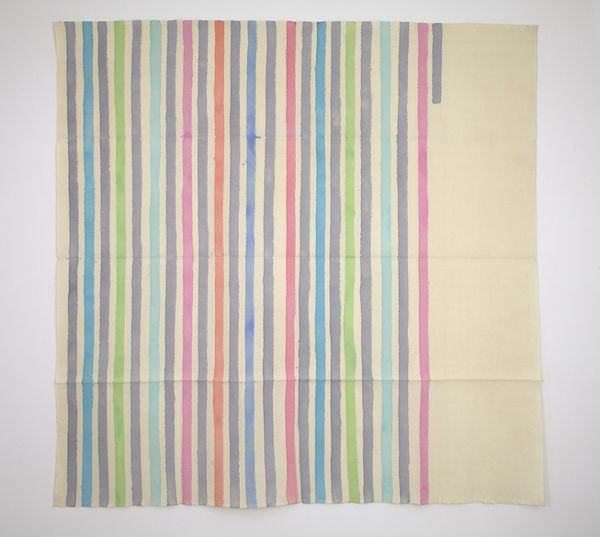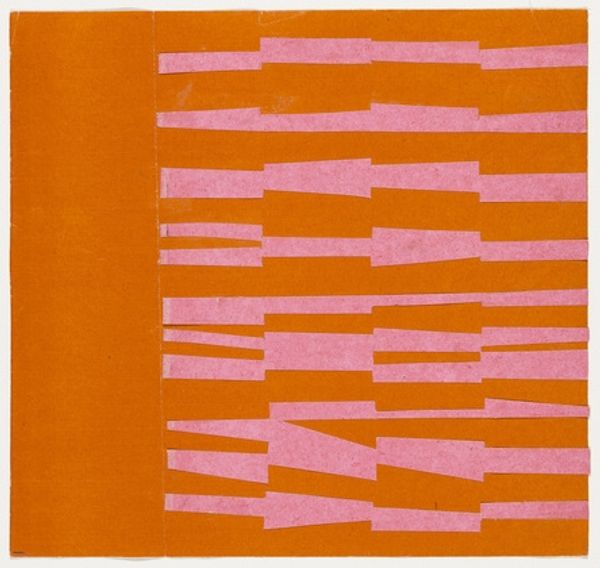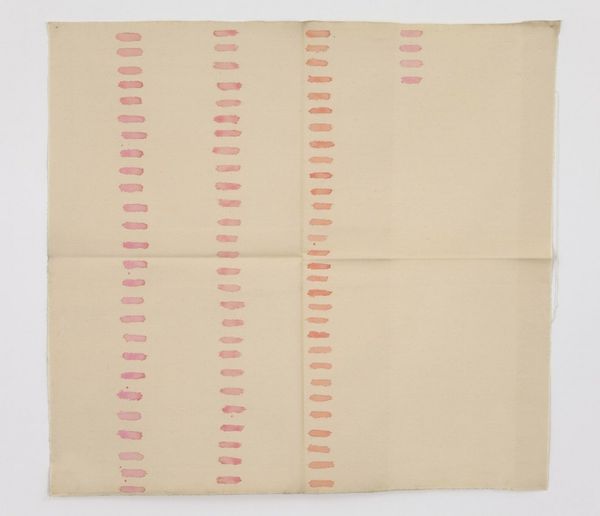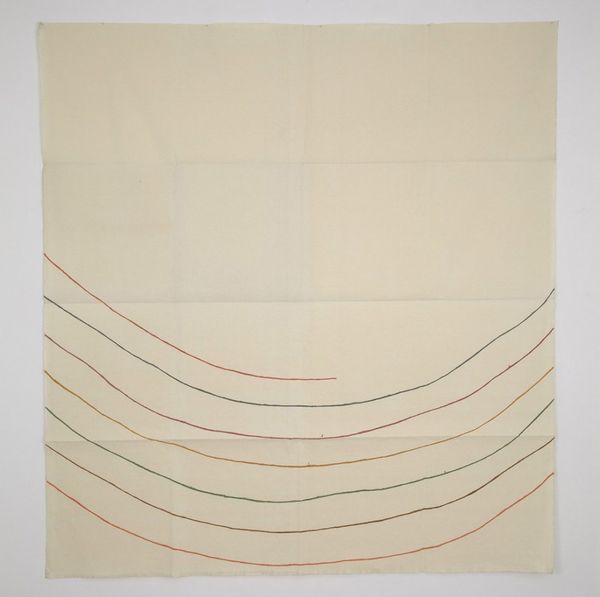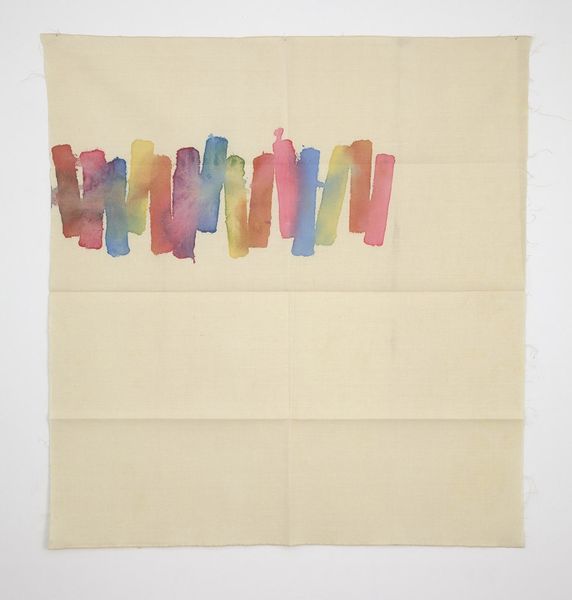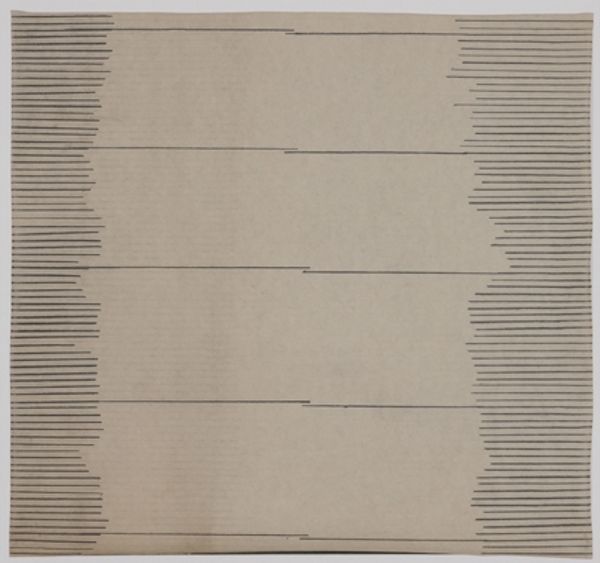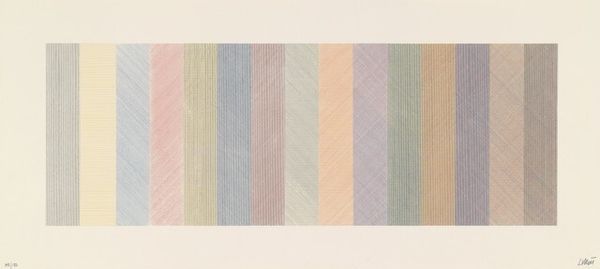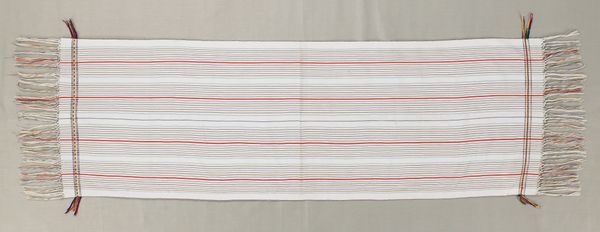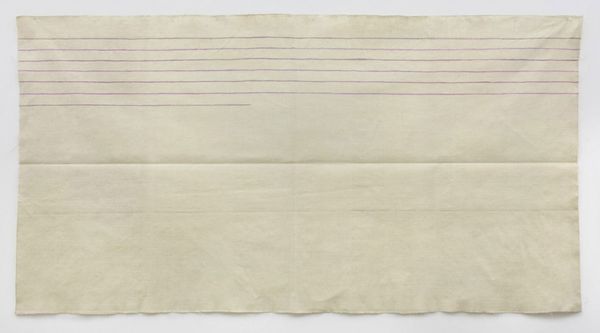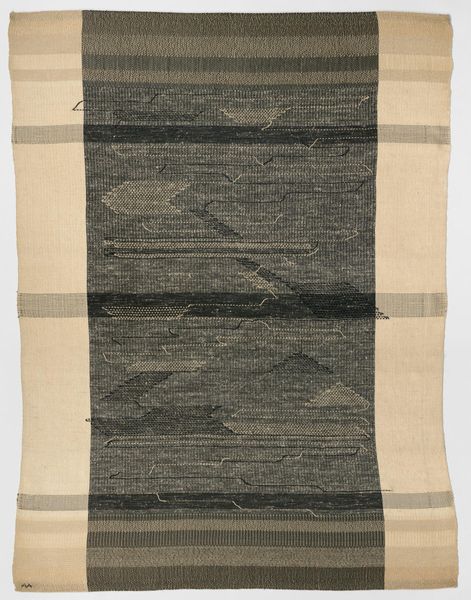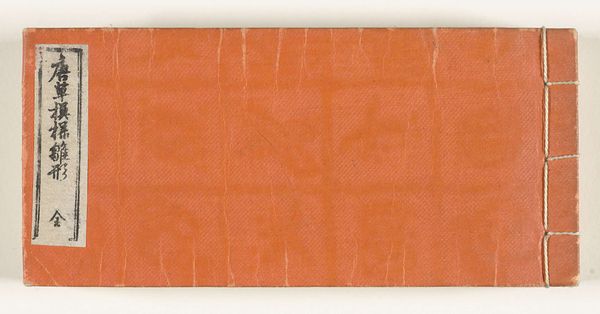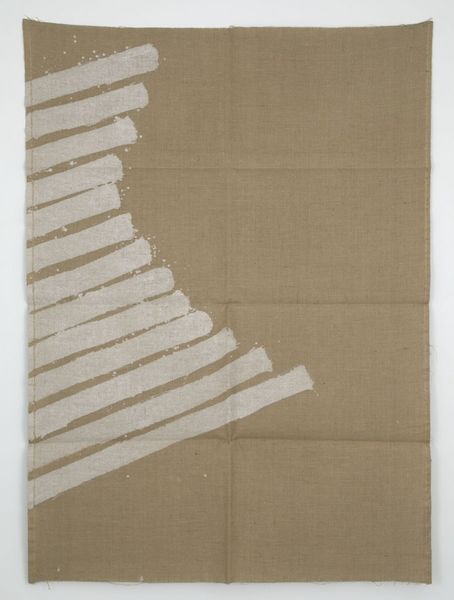
Copyright: Giorgio Griffa,Fair Use
Curator: Standing before us is Giorgio Griffa's "Orizzontale viola e lilla," created in 1975. He worked with watercolor on textile. It strikes me as deceptively simple. Editor: Immediately, I sense a quiet rebellion. The repetitive horizontal lines, the soft lilac hues…it’s visually calming, almost meditative. But, I’m wondering what social or political commentaries are layered beneath its seemingly gentle surface. Curator: Well, Griffa was working within a very specific moment. Consider the Arte Povera movement; Griffa, in a way, rejected the expressive subjectivity so celebrated by art history. His repetitive gestures point toward a new understanding of language itself. Editor: I see that—the rejection of grand narratives. And, knowing the political turmoil in Italy during the 70s adds another dimension. It’s like he’s quietly subverting traditional art forms, maybe reflecting societal exhaustion with chaos. Curator: Exactly. The textile support is important. It isn’t about masterful technique, but more about deconstructing the very nature of painting. Griffa’s interest here involves the foundational grammar that shapes visual language and cultural narratives. Editor: Right. What about the color choice? Is it as innocuous as it seems? Lilac can symbolize femininity and also associated with mourning... Curator: Absolutely, the choice of color would have a particular meaning. Consider the sociopolitical role of women at this time. The work invites interpretation related to identity, perhaps specifically gender identity, and a deliberate rejection of male-dominated abstract expressionism. Editor: A very restrained and subversive piece! The beauty lies in the subtle questioning of not just artistic conventions, but the broader cultural constructs too. Curator: Agreed. A deceptively simple piece, rich in complex ideas when viewed within its historical context. Editor: Absolutely, looking through the lenses of activism and historical materialism really uncovers the hidden depths.
Comments
No comments
Be the first to comment and join the conversation on the ultimate creative platform.
